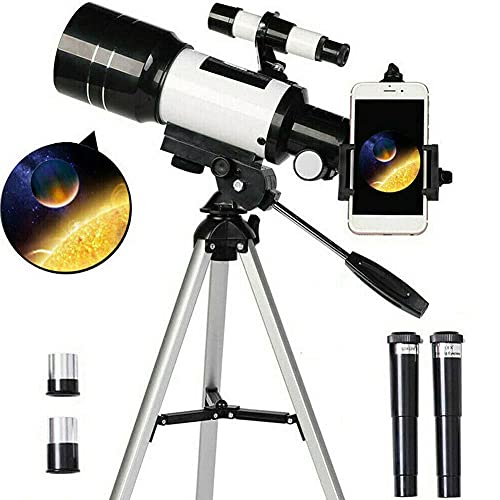Using a Telescope to View the Moon: What You Need to Know
Can I use a telescope to view the moon?
Yes, you can definitely use a telescope to view the moon. In fact, a telescope offers a unique and detailed view of Earth’s only natural satellite. Whether you are an amateur stargazer or a seasoned astronomer, observing the moon through a telescope can be a fascinating experience.
The benefits of using a telescope
Using a telescope allows you to see the moon in unprecedented detail. Unlike the naked eye, which can only reveal the moon’s surface as a bright, hazy orb, a telescope enhances your ability to explore the moon’s features. With a telescope, you can observe craters, mountains, valleys, and even the shadows cast by the sun’s angle.
Furthermore, a telescope provides a closer view of the moon, enabling you to see details that are not visible to the naked eye. If you have a particular interest in lunar geography or want to study the moon’s surface in more depth, a telescope is a valuable tool for your observations.
Choosing the right telescope
Before you can start observing the moon, it’s important to choose the right telescope for the task. There are several factors to consider when selecting a telescope:
Aperture: The size of the telescope’s primary mirror or lens determines its light-gathering capability. If you want to view the moon with clarity, a telescope with a larger aperture is recommended.
Magnification: Contrary to popular belief, higher magnification is not always better. In fact, too much magnification can result in a blurry or distorted image. A telescope with a moderate magnification range is ideal for lunar observations.
Mount type: Telescopes come with different types of mounts, such as equatorial and alt-azimuth. Depending on your level of experience and intended use, you may prefer one mount type over the other.
Budget: Finally, your budget will play a role in the telescope you choose. There are telescopes available for every budget, so it’s important to consider your needs and priorities before making a purchase.
In order to make an informed decision, it is recommended to do some research and read reviews from reputable sources before investing in a telescope.
Tips for observing the moon
Once you have chosen and set up your telescope, there are a few tips to keep in mind for optimal lunar observations:
Timing: The moon is best observed when it is in its crescent or gibbous phase. During these phases, the angle of the sun’s light creates long shadows and brings out the moon’s surface features.
Filters: Consider using a lunar filter to enhance your view of the moon. These filters help reduce the brightness and glare, allowing you to see more details on the lunar surface.
Steady viewing: To minimize shaking and ensure a steady view, use a tripod or mount for your telescope. This will help you maintain focus and make observing the moon more comfortable.
Patience: Observing the moon can require patience, especially if you want to capture specific features or moments. Take your time and experiment with different settings on your telescope to find the best view.
Resources for further exploration
There are numerous online resources available for further exploration of lunar observations with a telescope. Some websites offer detailed guides on lunar features, astronomy forums for discussing and sharing observations, and even software or apps that can help you identify specific locations on the moon.
Two notable websites that offer extensive resources on observing the moon and other celestial objects are Sky & Telescope and Astronomy.com. These websites provide articles, guides, and forums where you can connect with other astronomy enthusiasts and gain insights into lunar observations.
Additionally, there are smartphone apps like Star Walk, SkyView, and Stellarium that can be used as handheld guides to the night sky, making it easier to locate and identify the moon and other celestial objects.
With the right telescope and a little patience, observing the moon can be an incredibly rewarding experience. So, grab your telescope and start exploring the wonders of the lunar surface.






